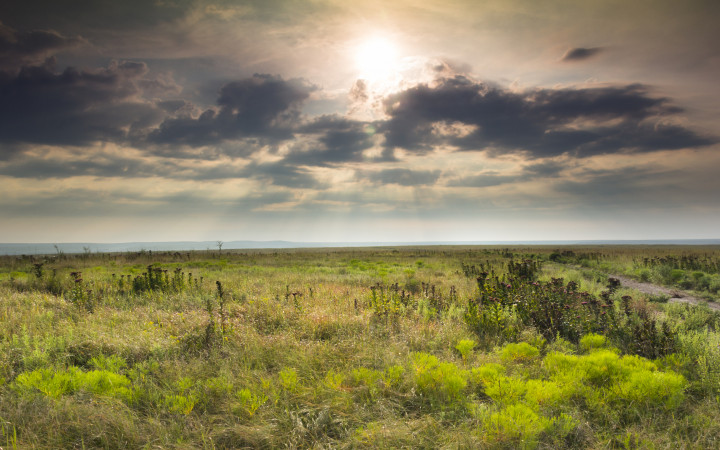Today’s Wonder of the Day was inspired by Jennifer. Jennifer Wonders, “where are prairies located?” Thanks for WONDERing with us, Jennifer!
Our world is full of diverse habitats. Can you name a few? There’s the ocean, of course. You may also think of the rainforest or even the desert. A variety of plants and animals may choose to live in rivers, mountains, or prairies.
But have you ever WONDERed what makes the prairie habitat special? It’s more than just a type of land or an area of a country. It’s a diverse ecosystem full of native grasses and flowering plants. Animals, soils, geology, and even fire play important roles in the prairie habitat.
Many people think of prairies as grasslands. After all, they’re often covered in native grasses. In most prairie areas, there is not enough rain throughout the year to support trees. As a result, they have few trees that tend to be widely scattered. In addition, fire plays a role in keeping prairie land the way it is. Occasional wildfires keep trees and shrubs from turning the lands into woodlands.
Each area of the world has a special name for its grasslands. In North America, we call them prairies, after the French word for a meadow grazed by cattle. In Russia, grasslands are called steppes. In South Africa, they’re called the veld, and in South America, you may hear them referred to as pampas.
The native grasses that make up prairies come in hundreds of varieties. In fact, just five acres of the land can be home to as many as 100 plant species. Common flowers include blazing stars, coneflowers, sunflowers, asters, and goldenrods. Prairies are also home to a wide variety of animals. This includes prairie dogs, prairie chickens, buffalo, bison, elk, deer, rabbits, hawks, and foxes.
Around the world, prairies cover almost a quarter of Earth’s land surface. Unfortunately, the habitats are now endangered in many areas of the world. That includes the plains of North America.
Prairies once covered over 40 percent of the United States. Today, only about 1 percent still exists. The native tallgrass prairie, once prevalent in Texas, is now the most endangered ecosystem in North America. The Great Plains is the only other region of the U.S. where prairie land can still be found.
What caused the loss of these habitats? Many factors have contributed. For example, the lands are often used for farming. As native grasses are cleared, much of the soil is lost to erosion—since the native grasses are no longer there to help hold it in place. Fortunately, there are many efforts underway across the United States to restore prairie lands that have been lost.
Many people find the natural beauty of prairies breathtaking. If you’ve ever seen one, you may know why! These habitats are home to a diverse range of species. Hopefully, it’s not too late to save the prairies for future plants and animals.
Standards: NGSS.LS2.A, NGSS.LS2.C, CCRA.L.3, CCRA.L.6, CCRA.R.1, CCRA.R.2, CCRA.R.4, CCRA.R.10, CCRA.SL.1, CCRA.SL.2, NCAS.A.1, NCAS.A.2, NCAS.A.3, CCRA.W.7




